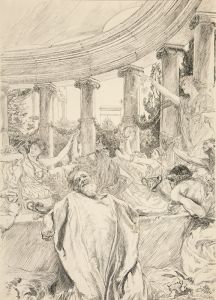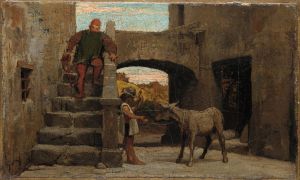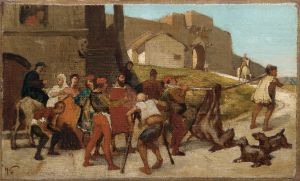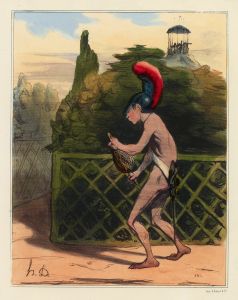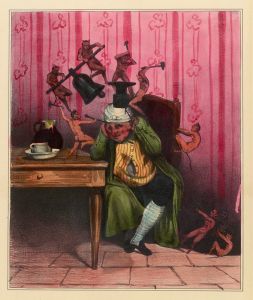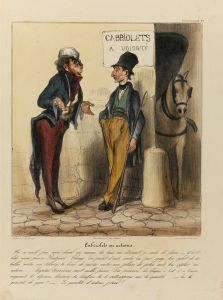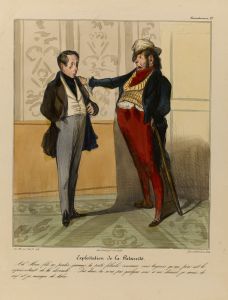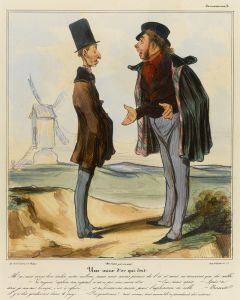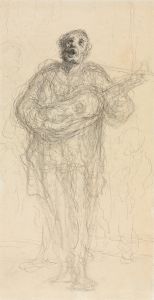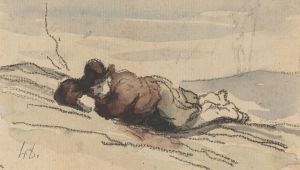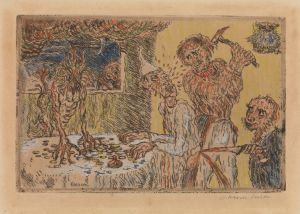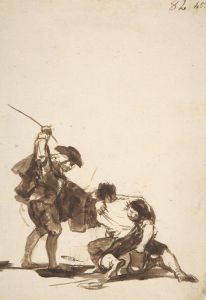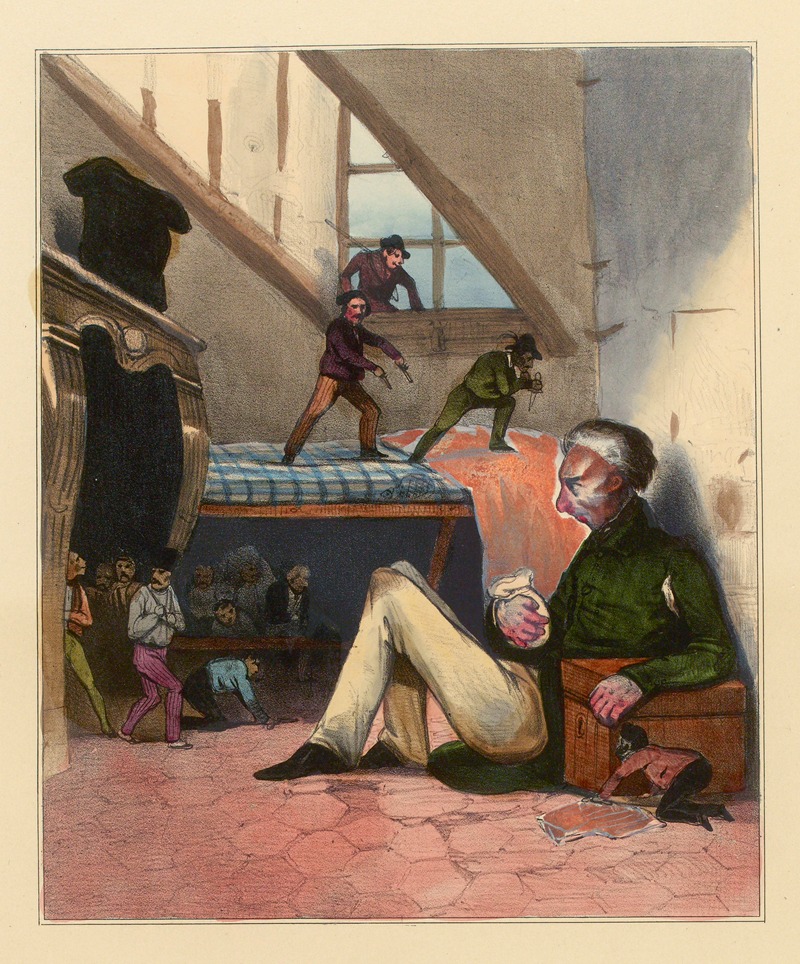
L’avare
A hand-painted replica of Honoré Daumier’s masterpiece L’avare, meticulously crafted by professional artists to capture the true essence of the original. Each piece is created with museum-quality canvas and rare mineral pigments, carefully painted by experienced artists with delicate brushstrokes and rich, layered colors to perfectly recreate the texture of the original artwork. Unlike machine-printed reproductions, this hand-painted version brings the painting to life, infused with the artist’s emotions and skill in every stroke. Whether for personal collection or home decoration, it instantly elevates the artistic atmosphere of any space.
Honoré Daumier (1808–1879) was a French painter, caricaturist, and sculptor, widely recognized for his satirical works and social commentary. Among his extensive body of work, the painting L’Avare (translated as The Miser) is one of his notable pieces. This artwork reflects Daumier’s interest in human behavior and his ability to capture the essence of character through expressive forms and dramatic compositions.
L’Avare is believed to have been inspired by Molière’s famous play L’Avare (1668), which portrays the story of Harpagon, a miserly character obsessed with hoarding wealth. While Daumier’s painting does not directly illustrate a specific scene from the play, it embodies the themes of greed and avarice, which were central to Molière’s work. The painting depicts a solitary figure, likely a miser, clutching his possessions with an air of suspicion and paranoia. The exaggerated features and intense expression of the subject are characteristic of Daumier’s style, which often emphasized psychological depth and emotional intensity.
Daumier’s approach to L’Avare reflects his broader artistic concerns. He was deeply influenced by the social and political climate of 19th-century France, particularly during the July Monarchy and the Second Empire. His works often critiqued societal inequalities and human vices, making him a prominent figure in the Realist movement. Although Daumier is best known for his lithographs and caricatures published in satirical journals such as La Caricature and Le Charivari, his paintings, including L’Avare, demonstrate his mastery of form, light, and composition.
The painting is executed in a somber palette, dominated by earthy tones and dramatic contrasts of light and shadow. This use of chiaroscuro enhances the mood of the piece, emphasizing the miser’s isolation and the moral weight of his greed. Daumier’s brushwork is loose and dynamic, lending the painting a sense of immediacy and vitality. This technique aligns with the Realist ethos of portraying life as it is, without idealization.
The exact date of L’Avare’s creation is not definitively documented, but it is generally attributed to the later period of Daumier’s career, when he focused more on painting than on his earlier satirical prints. The painting is housed in the Petit Palais, the City of Paris Museum of Fine Arts, where it remains an important example of Daumier’s ability to merge social critique with artistic innovation.
Daumier’s L’Avare continues to be appreciated for its incisive commentary on human nature and its place within the broader context of 19th-century art. It exemplifies his skill in capturing the complexities of character and emotion, solidifying his legacy as one of France’s most influential artists.





